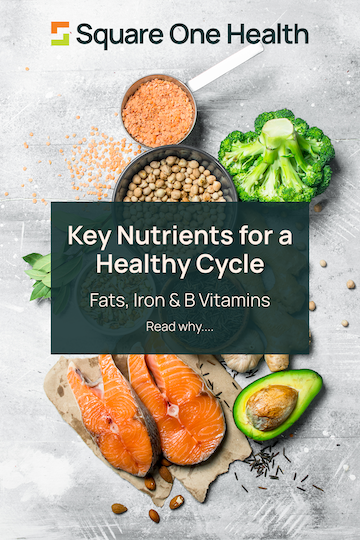Beyond the Cramps: How a Root-Cause Approach Can Ease Painful Periods
- Stephanie - Square One Health
- Aug 20
- 3 min read
For many, menstrual cramps and painful periods are more than just an inconvenience—they can be debilitating, disruptive, and make you feel like you have to put your life on hold every month. But what if your body's pain signals are trying to tell you something more? While conventional treatments often focus on suppressing the pain with medication, a functional nutrition approach helps you look beyond the symptoms to find and address the root causes. This isn't about simply enduring your period; it's about understanding your body and creating lasting hormonal balance so you can reclaim your health and vitality.
What Causes Menstrual Cramps? The Role of Prostaglandins
The primary cause of menstrual cramps, or dysmenorrhea, is the release of prostaglandins. These hormone-like substances promote uterine contractions, which are essential for shedding the uterine lining each month. When produced in excess, they can lead to more intense and painful contractions, causing severe cramps and discomfort. In some cases, medical conditions like uterine fibroids or endometriosis can also contribute to painful contractions.
Moving Beyond the Quick Fix: Your Root-Cause Plan
Instead of just reaching for a pill to mask the pain, a functional approach addresses the underlying factors contributing to prostaglandin overproduction and inflammation.
Step 1: Focus on an Anti-Inflammatory Diet A diet high in inflammatory foods can exacerbate pain and cramps. By focusing on an anti-inflammatory diet, you can help calm the body's systems. This means reducing or avoiding processed foods, refined sugars, and trans fats while increasing your intake of healthy fats. For example, omega-3 fatty acids, found in foods like fatty fish and flaxseeds, have powerful anti-inflammatory properties that can help alleviate symptoms.
Step 2: Balance Your Blood Sugar Blood sugar swings don't just affect energy levels—they impact your hormones and can contribute to inflammatory processes. A diet high in refined sugars and carbohydrates can lead to elevated insulin levels, which can further disrupt hormonal balance. Eating balanced meals that contain fat, fiber, and protein can help stabilize blood sugar and support your body's ability to manage its hormonal rhythm more effectively.
Step 3: Support Your Liver and Detoxification Proper liver function is essential for hormone balance because it helps metabolize and eliminate excess hormones, including estrogens. If the liver is overworked, excess hormones can recirculate in the body, contributing to symptoms. Supporting your liver with foods like cruciferous vegetables and incorporating herbs like turmeric and ginger can be beneficial.
Step 4: Incorporate Targeted Lifestyle & Movement Stress and lack of sleep can significantly impact hormonal balance, leading to more intense symptoms. Gentle exercise, such as yoga, can help promote blood circulation and reduce muscle tension. Restorative practices like abdominal massage and deep breathing can also be very helpful for relieving cramping and discomfort.
Beyond the Basics: Herbal Allies for Painful Periods
Herbal medicine can be a powerful ally on your wellness journey. While herbs should never be used as a "quick fix" on their own, they can be supportive when integrated into a comprehensive plan that addresses root causes.
Red Raspberry Leaf: Known as a uterine tonic, this herb helps strengthen and tone the muscles of the pelvic region. It's a gentle and nourishing herb that can be taken as a tea daily.
Cramp Bark: As its name suggests, this herb is a uterine antispasmodic that helps relieve muscle cramping and pain.
Ginger & Turmeric: These anti-inflammatory herbs can be powerful for tamping down the inflammation associated with menstrual pain. You can easily add them to your cooking or enjoy them as a tea.
Navigating painful periods can feel isolating, especially when the only solutions offered are quick fixes that just mask the pain. But your body’s signals are a starting point, not a dead end. By adopting a root-cause approach, you have the power to uncover the underlying issues—whether they are related to inflammation, diet, or hormonal imbalances—and find a path to sustainable, lasting relief. This journey is a partnership, and you don’t have to do it alone.
Ready to find the root cause of your period pain?
Book a free discovery call to discuss your health story and learn how a personalized plan can help you feel better in your body.
Medical Disclaimer: This content is for informational purposes only and is not intended to be a substitute for professional medical advice, diagnosis, or treatment. Always seek the advice of your physician or other qualified health provider with any questions you may have regarding a medical condition.



